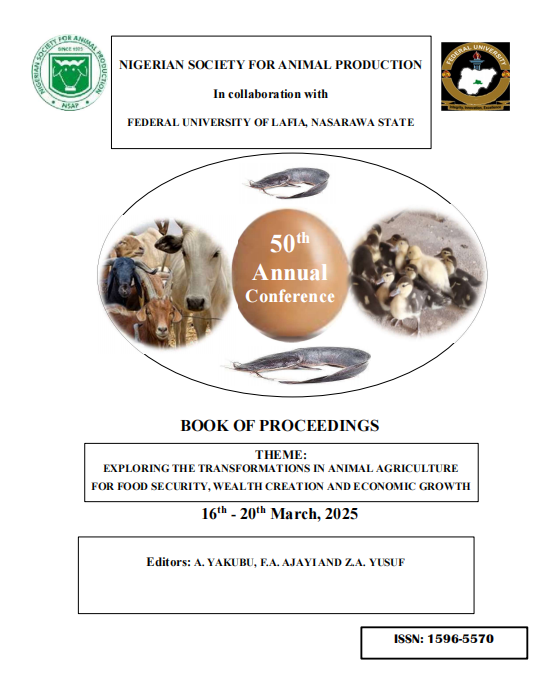NUTRITIONAL COMPOSITION OF PASTURE SPECIES AS AFFECTED BY VARIETY AND COW DUNG APPLICATION RATES
Keywords:
Pasture nutrition, Cow dung, Forage quality, Crude protein, VarietyAbstract
The nutritional composition of pasture species is essential for sustainable livestock production, influenced by genetic variation and soil fertility management. This study evaluated the effects of different cow dung application rates (0, 5, and 10 t/ha) on the nutritional composition of six pasture varieties (NAPRI gamba, Local gamba, NAPRI kyasuwa, Local kyasuwa, NAPRI guinea, and Local guinea) in Lafia, Southern agroecological zone of Nasarawa State, Nigeria. The experiment was conducted using a randomized complete block design with three replications in a factorial arrangement. Moisture content (MC), ash, crude protein (CP), ether extract (EE), crude fiber (CF), and nitrogen-free extract (NFE) were assessed. Results revealed significant (P<0.05) differences in nutrient composition across pasture varieties and cow dung application rates. NPM had the highest MC (3.42%), while NMM had the lowest (3.34%). The highest CP content was observed in NGM (21.29%), and the lowest in LGM (5.93%). Ash content varied from 15.66% in NMM to 9.20% in NPM. The highest EE content was found in NMM (10.97%) and the lowest in NGM (5.79%). LGM exhibited the highest CF content (11.22%), while NGM had the lowest (9.26%). The highest NFE content was recorded in NPM (63.90%). The interaction between cow dung rates and pasture variety significantly (p≤ 0.05) influenced all nutritional parameters. These findings emphasize the importance of pasture selection and organic fertilization in optimizing forage quality for sustainable livestock production.

